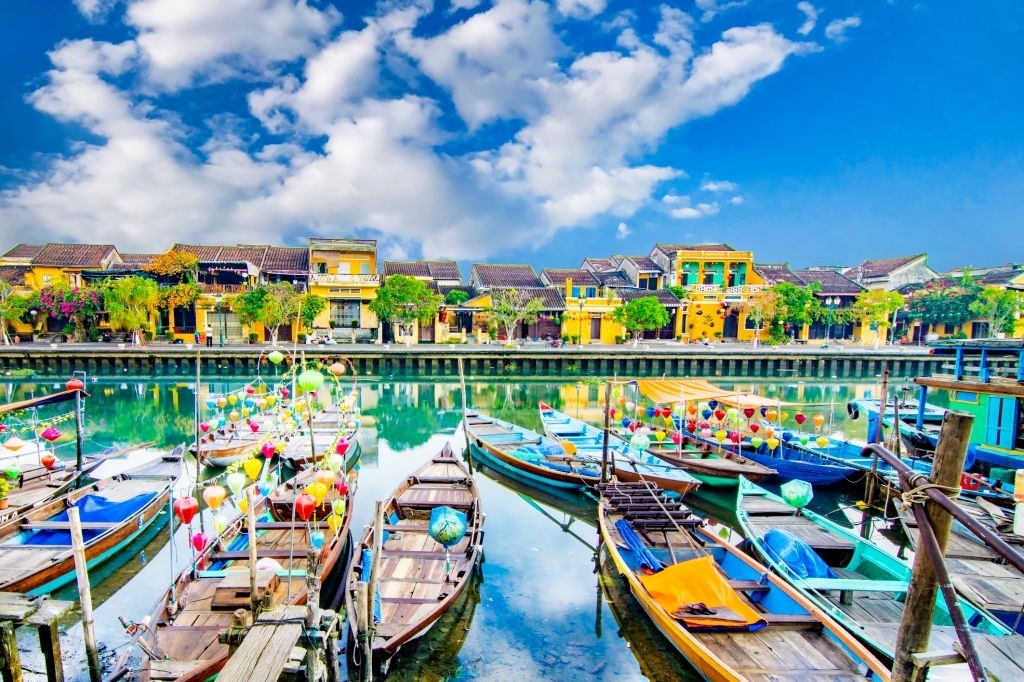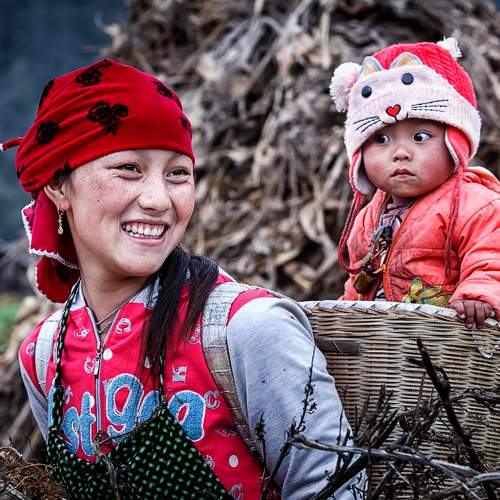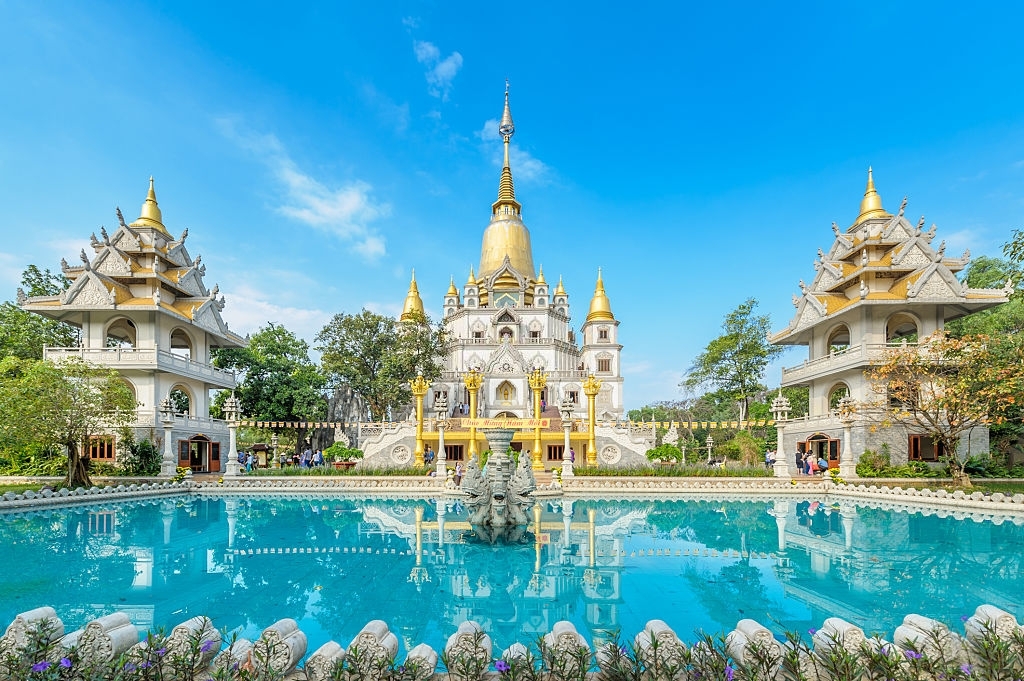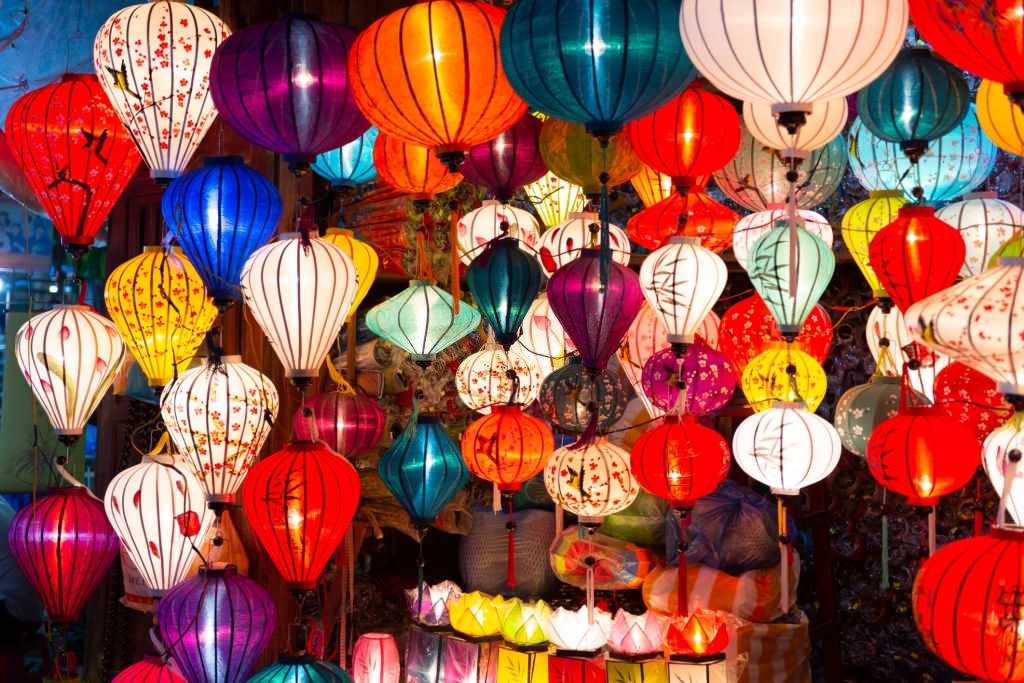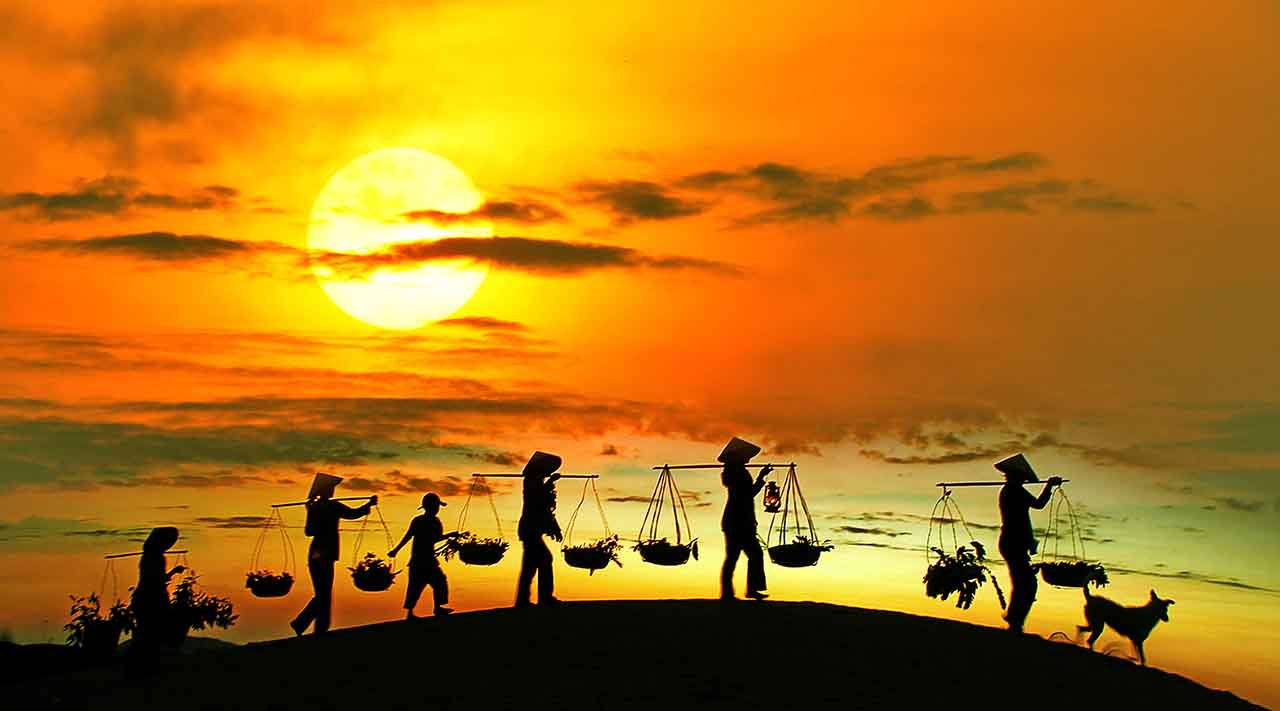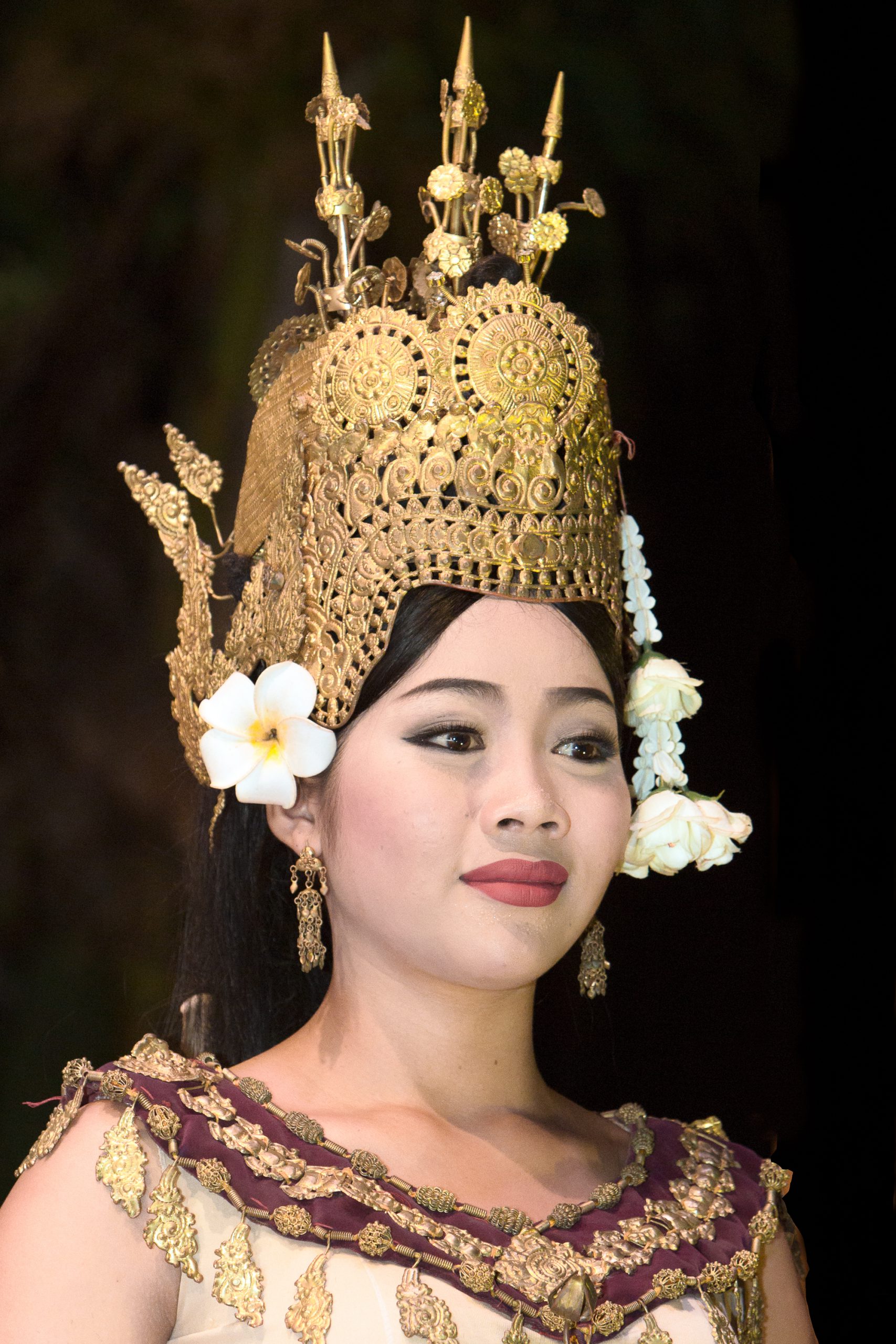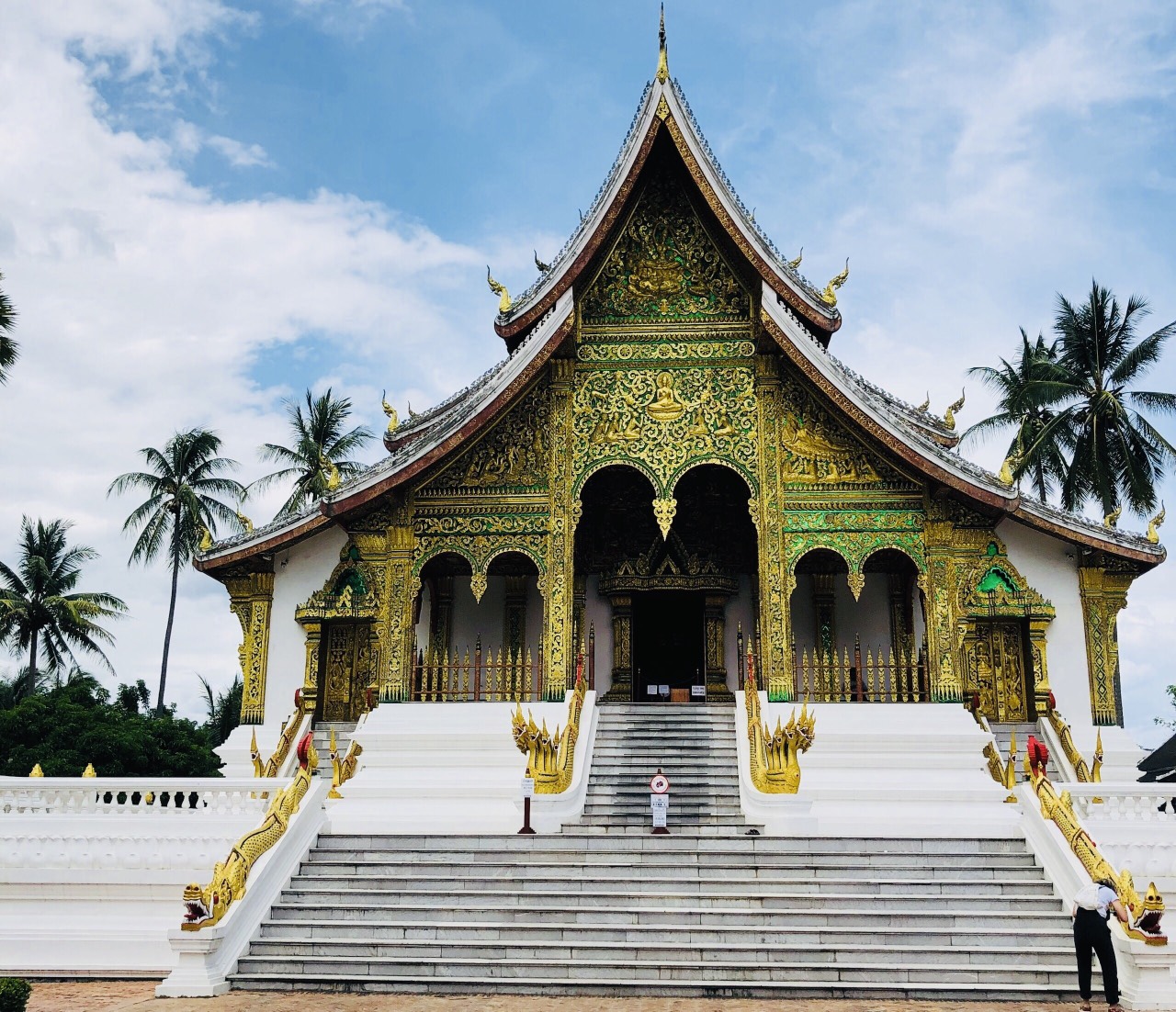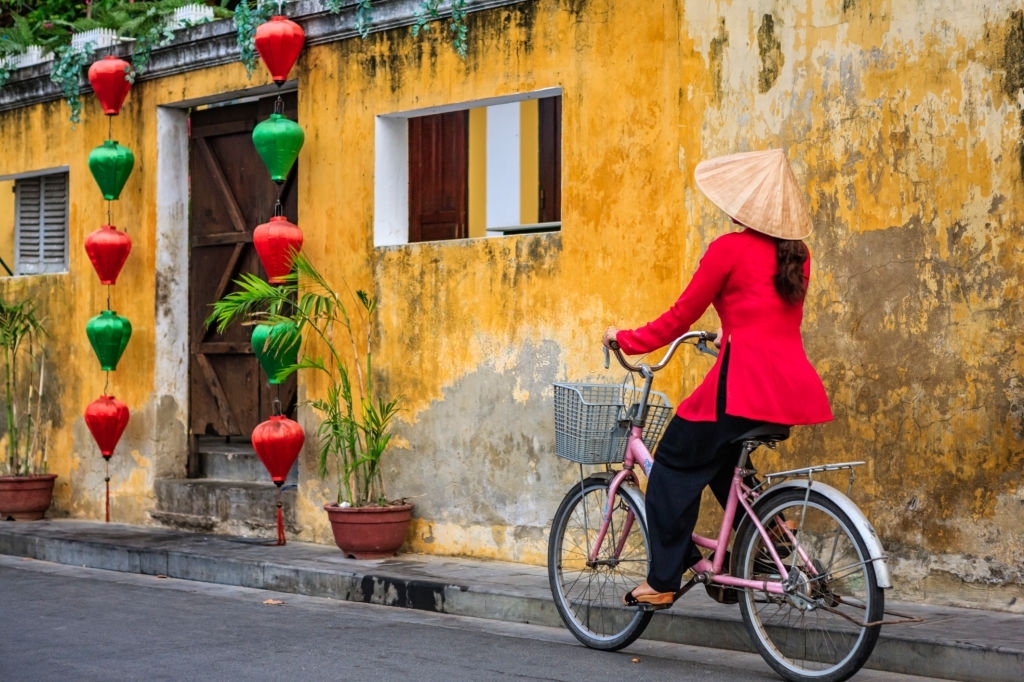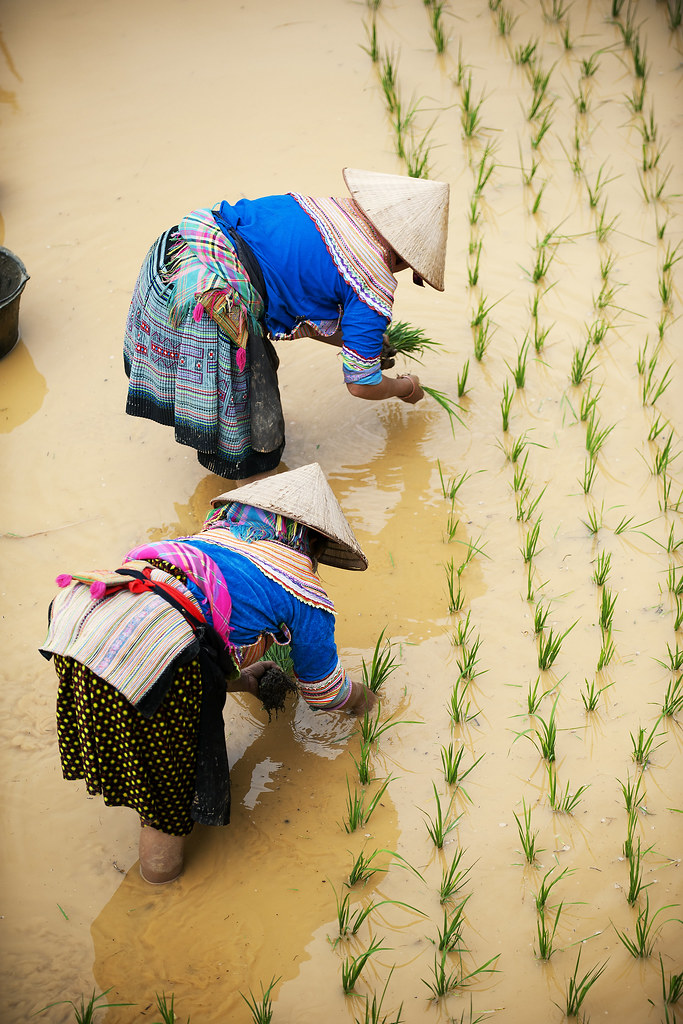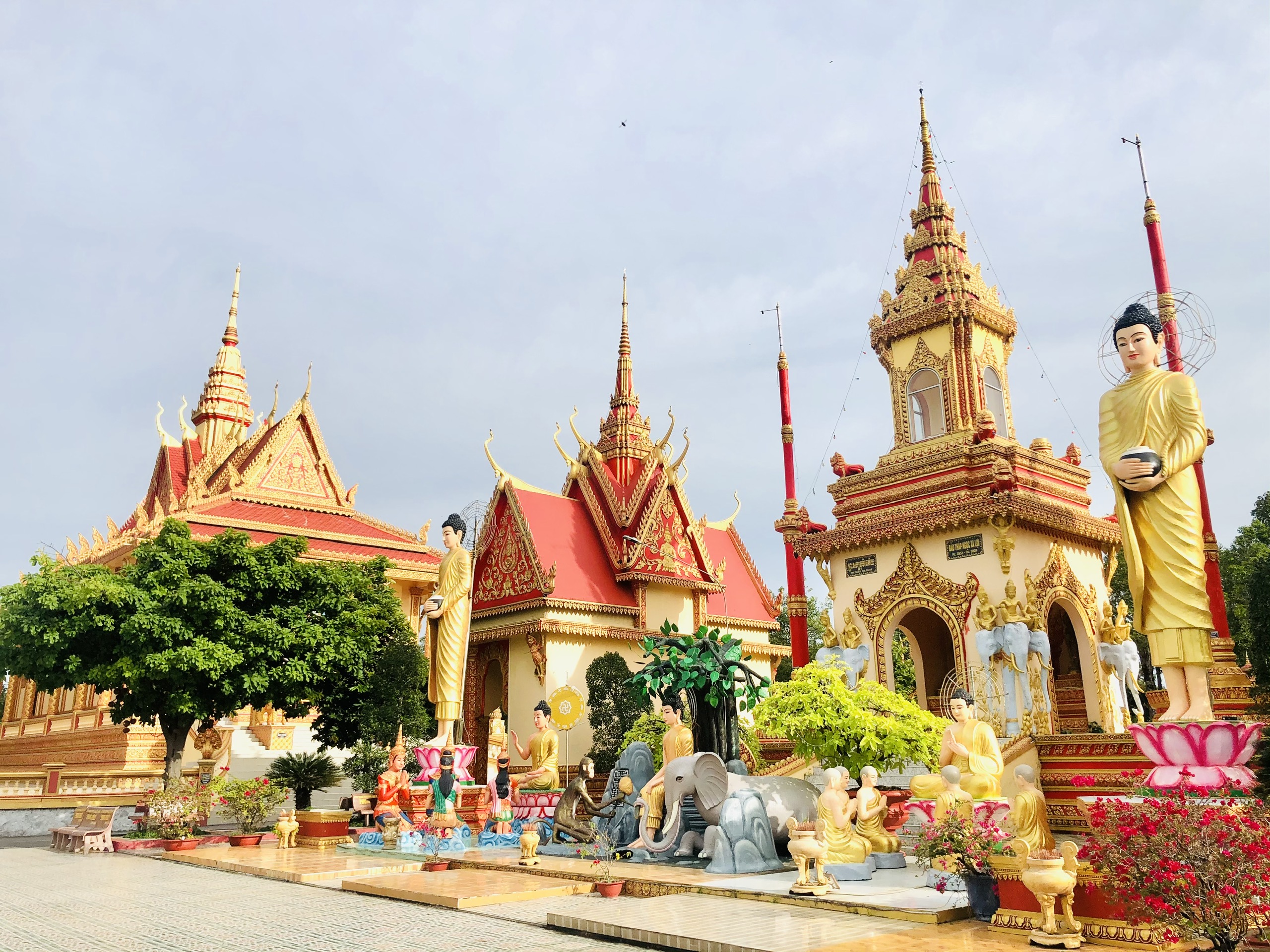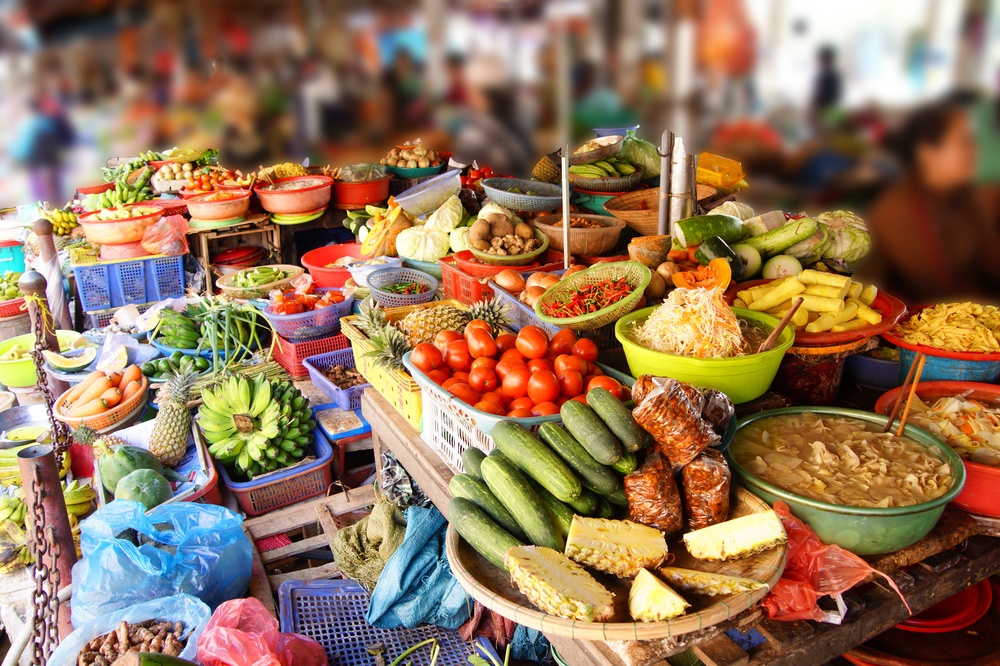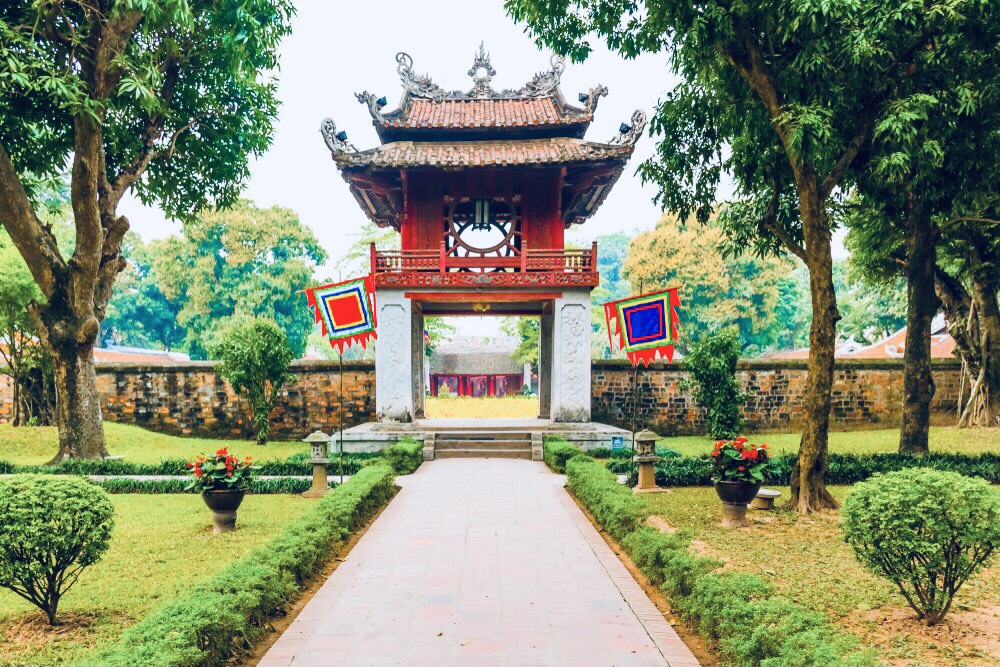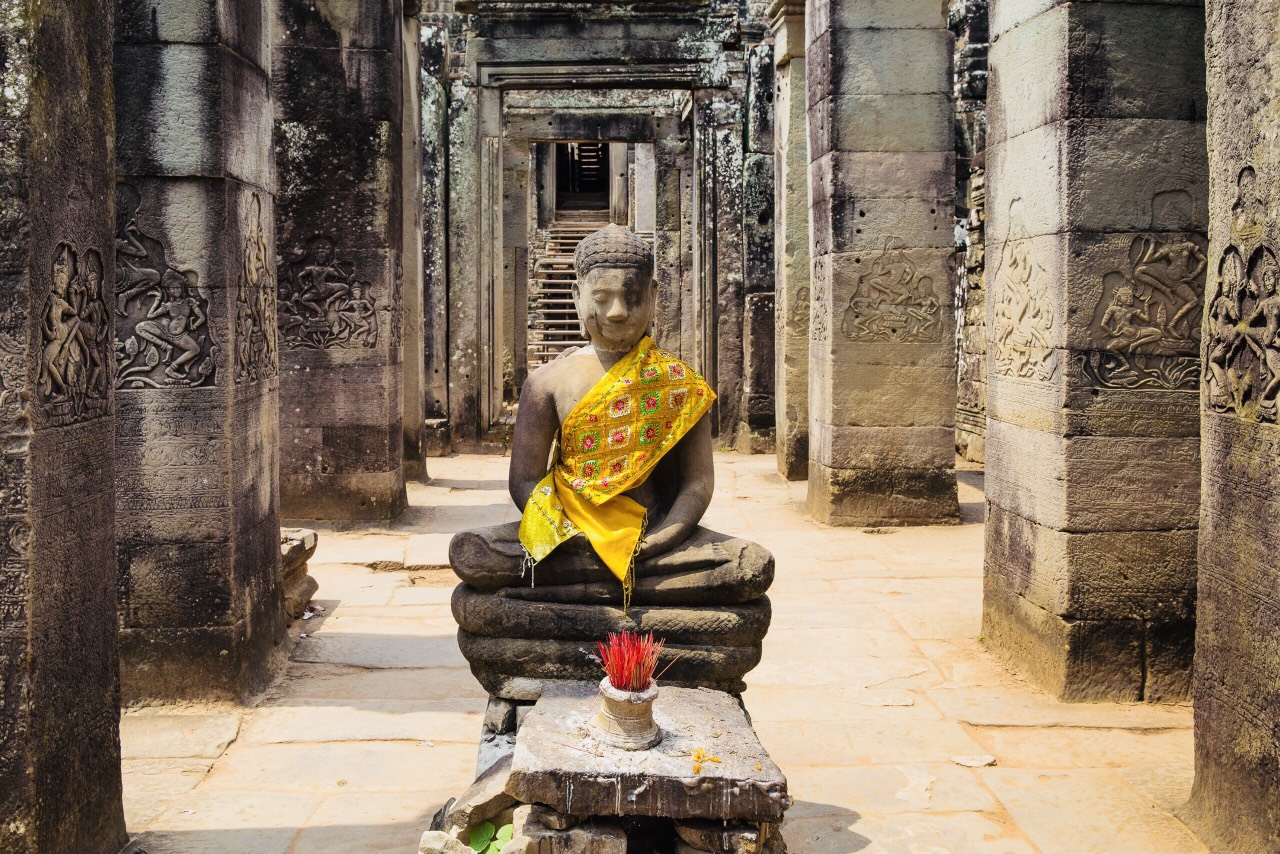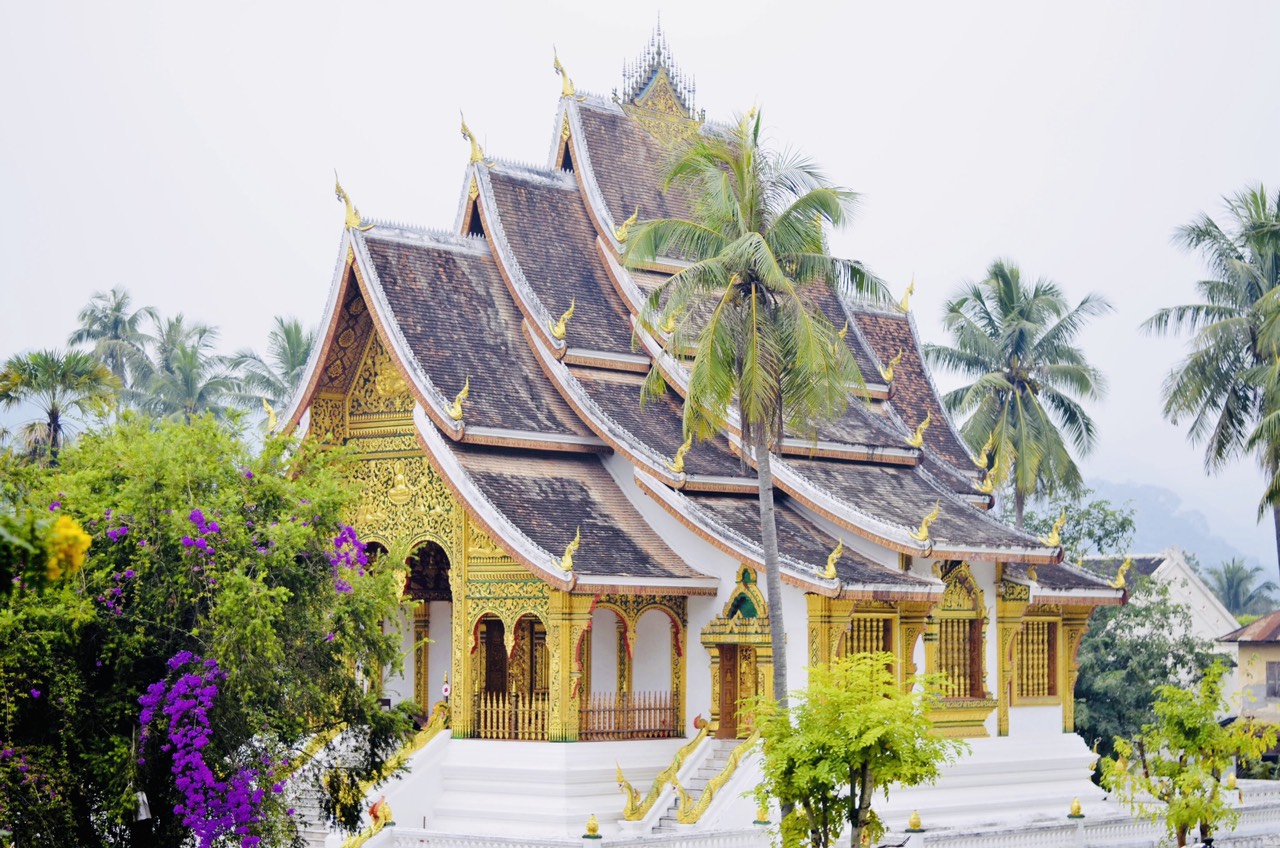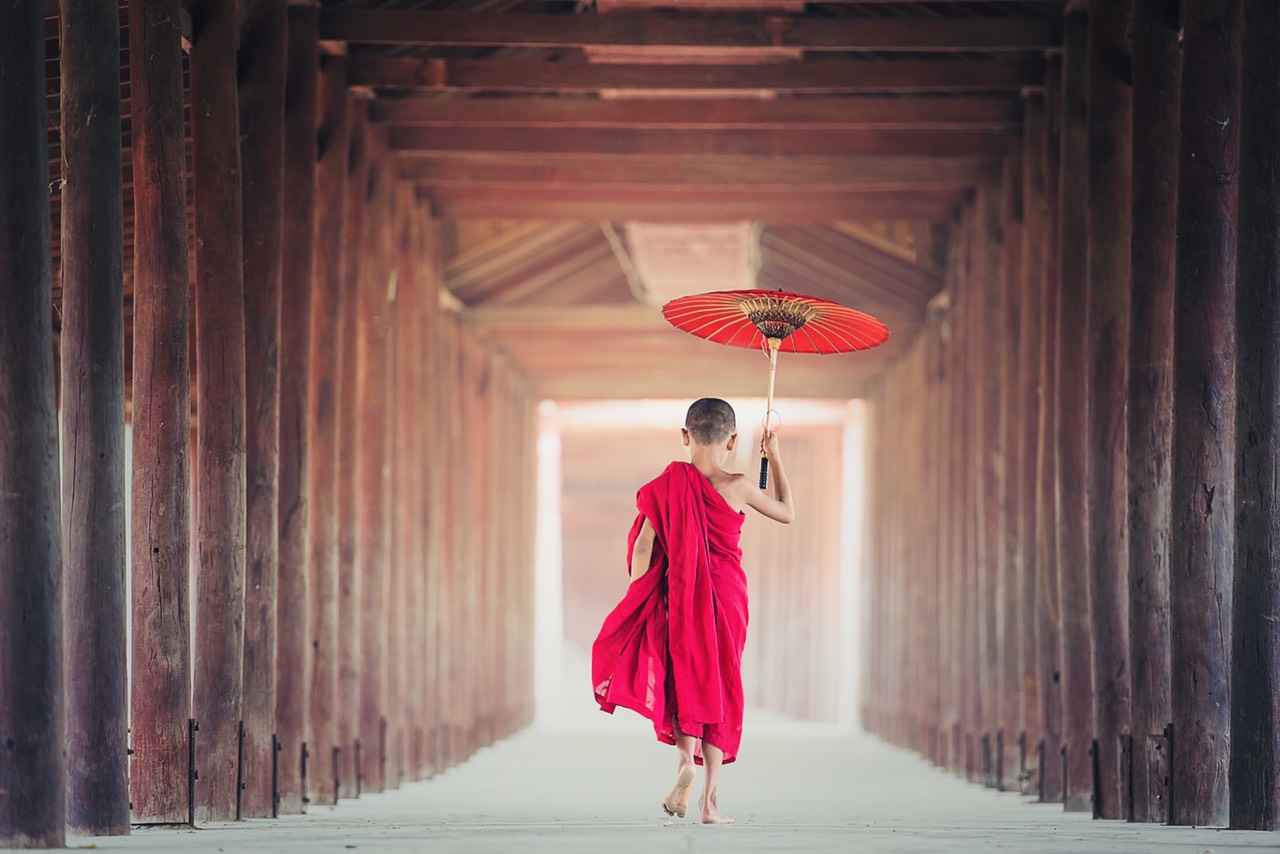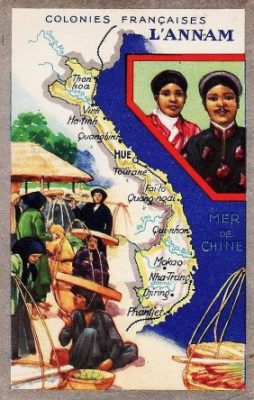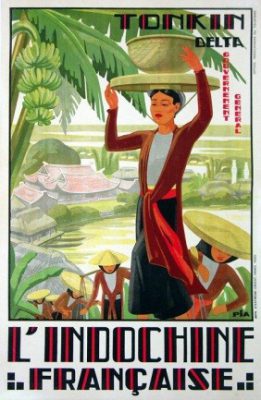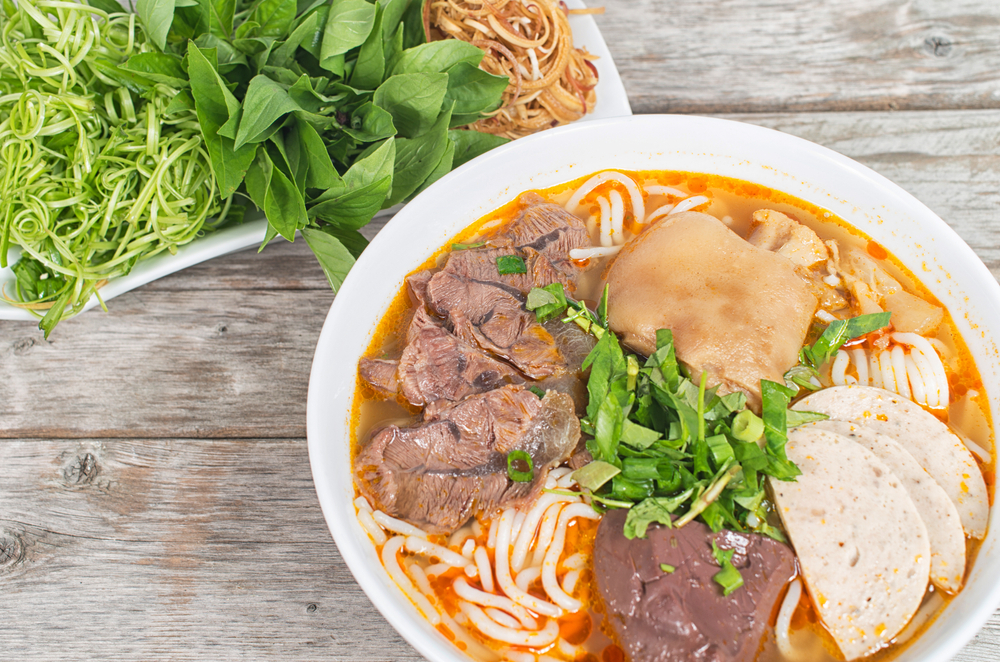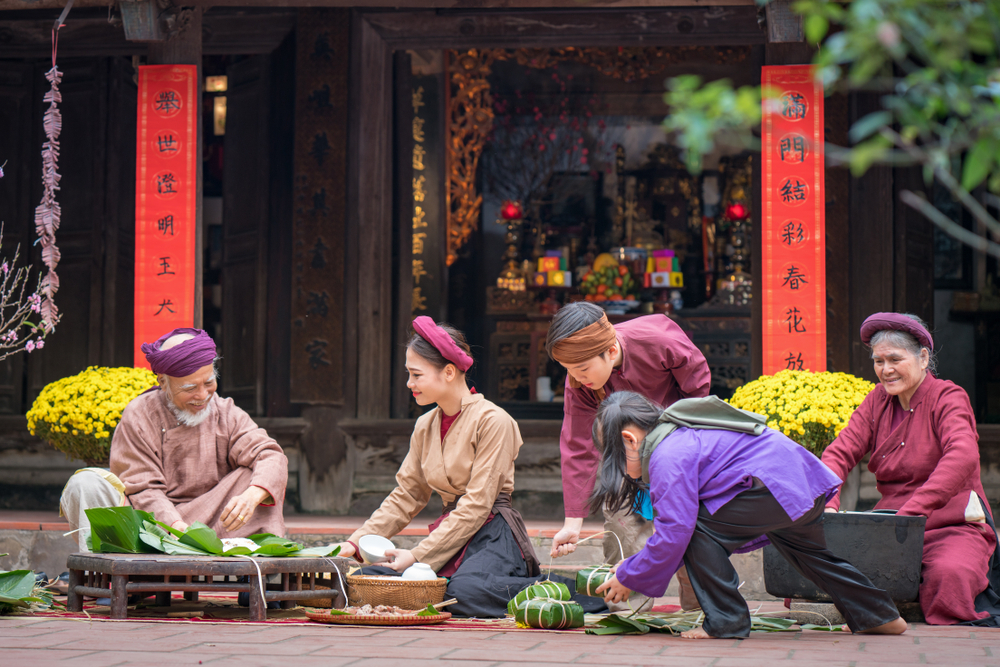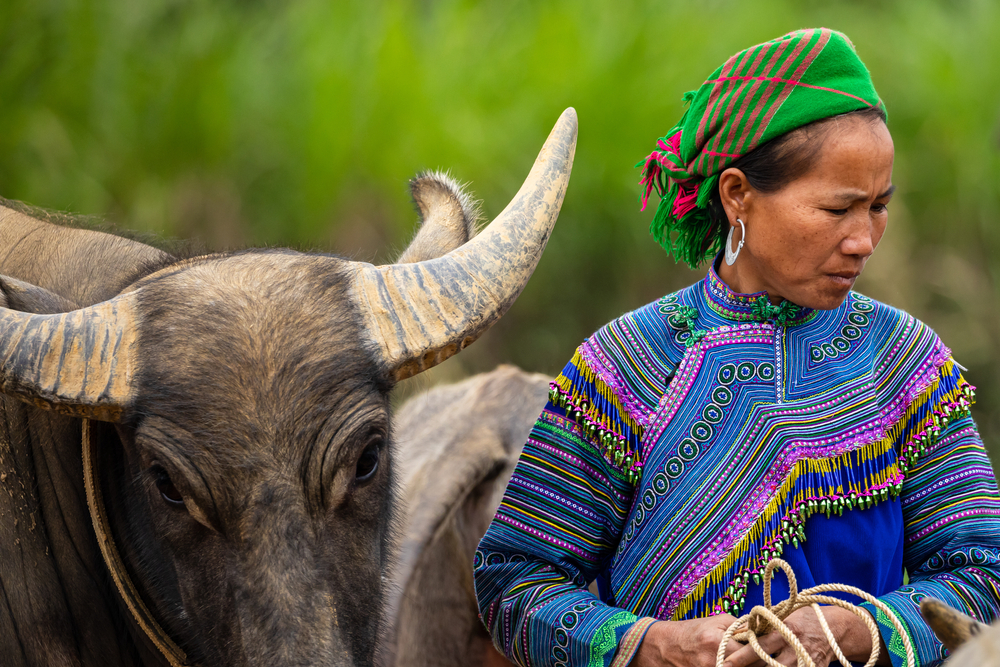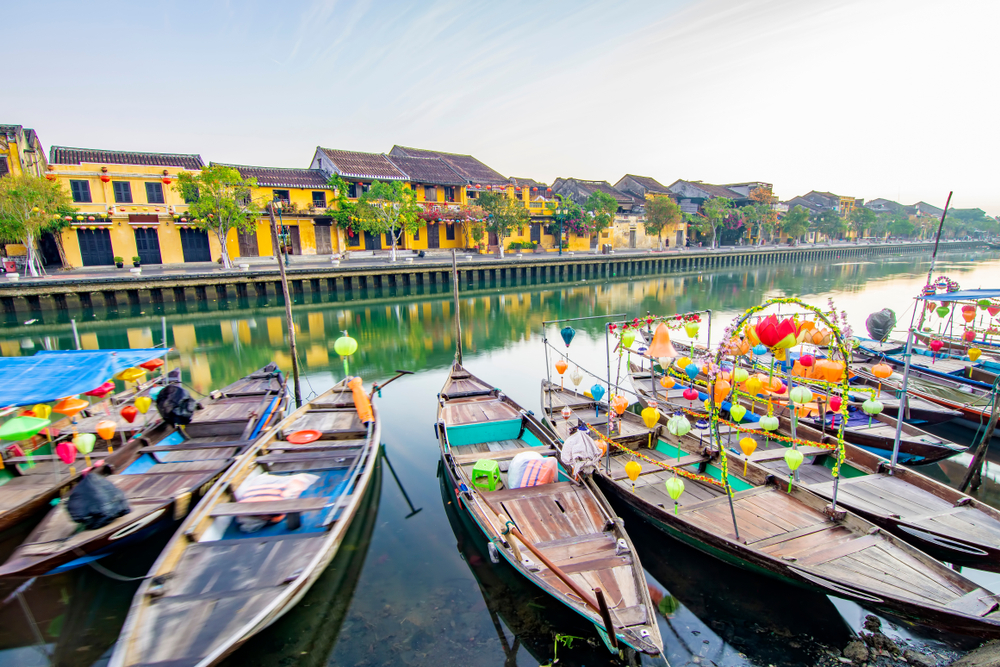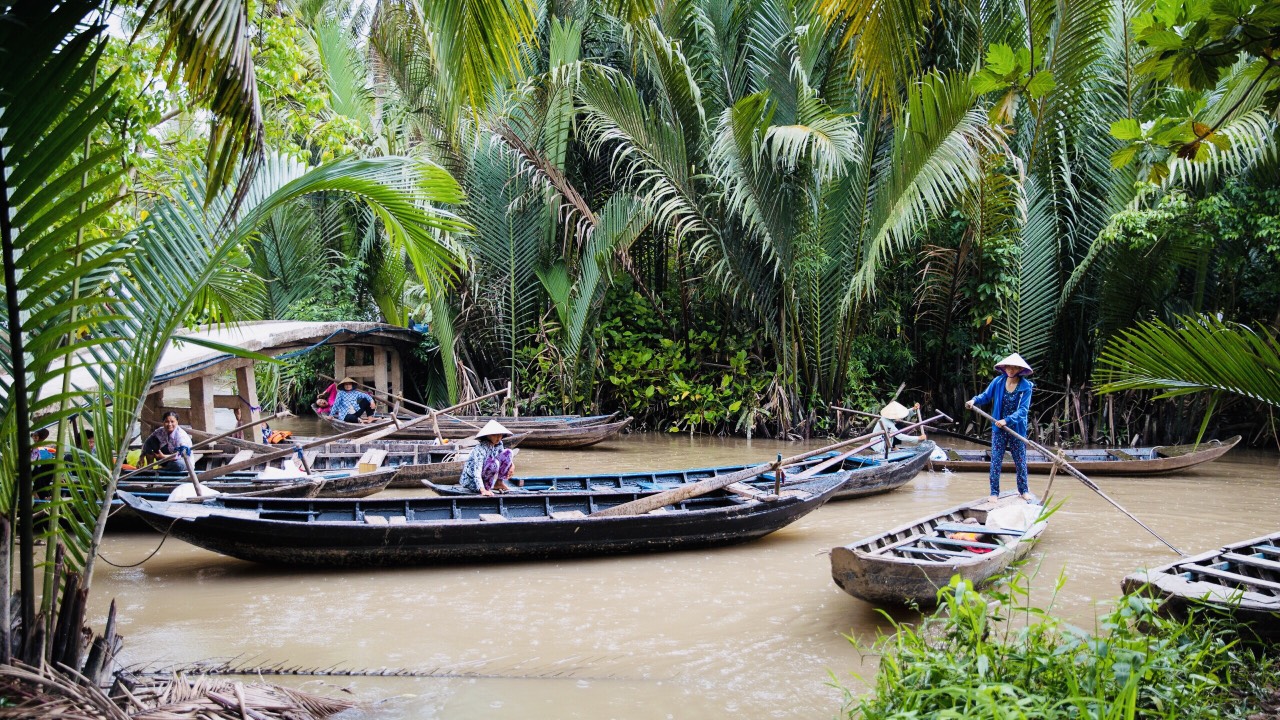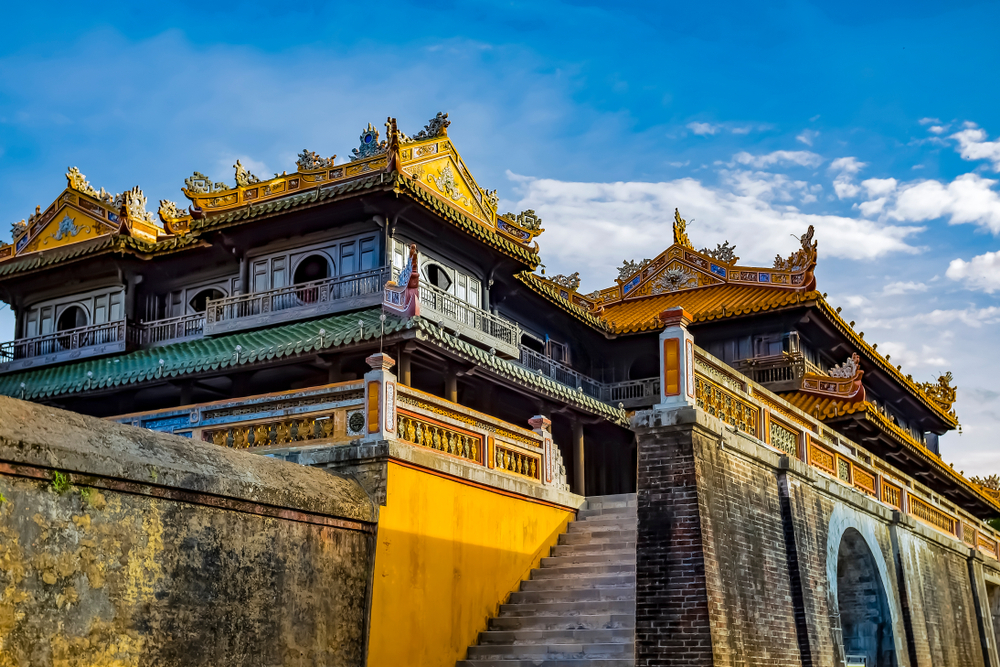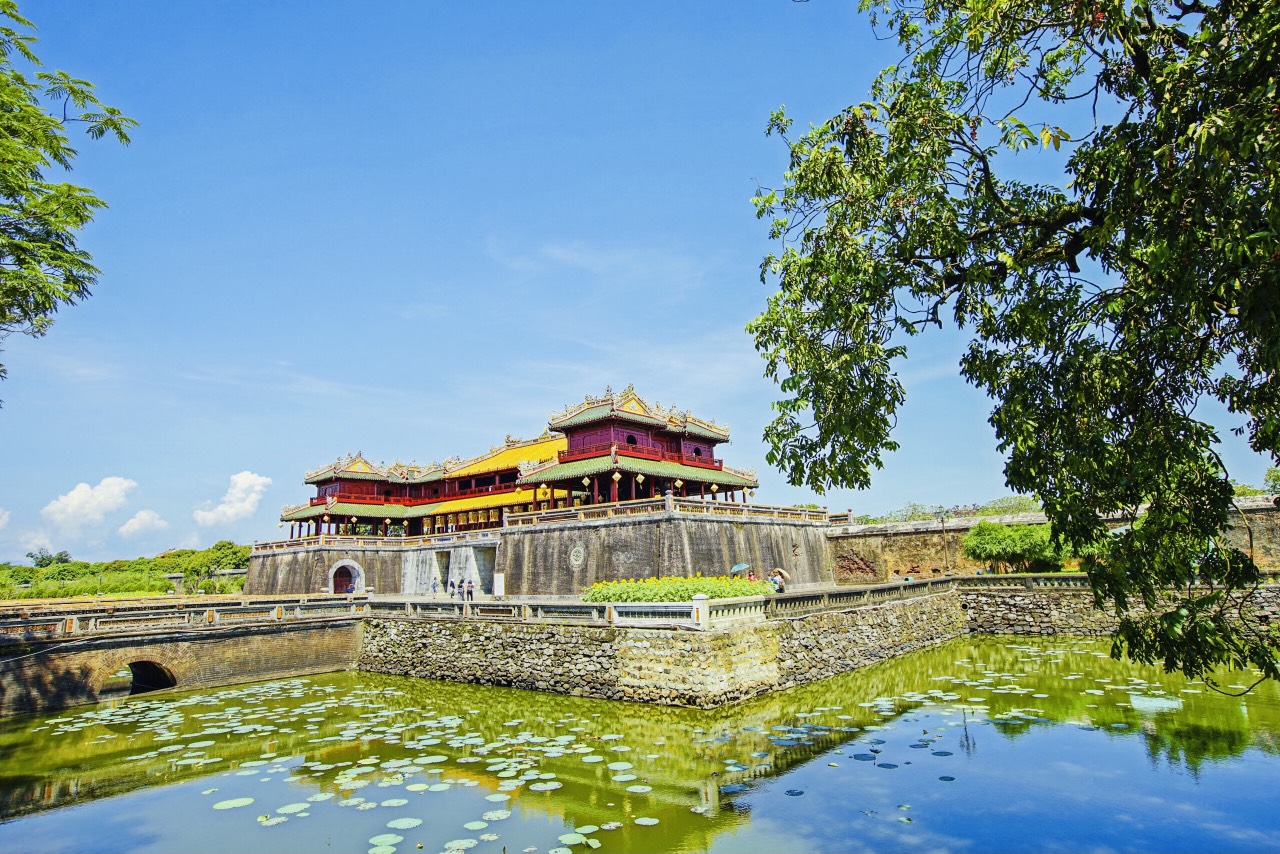
French Indochina.
the second world war against the japanese.
the Indochina war against the French.
the Vietnam War against the Americans.
civil war between North and South.
the war against Cambodia.
I know about twenty years of American economic warfare against my country, known as the “embargo”.
And I also know that all this, after more than ten thousand years of Chinese domination, has made a country of gentleness and pain, plural and singular, complex and so simple, full of contradictions and imperfections.
So it’s hardly surprising that its name is written in so many different ways: Vietnam, Viêtnam, Viet-Nam, Viêt-Nam, Viêt Nam, Viet-nam, Viêt-nam. …
So many spellings, so many ways of understanding and therefore loving it … or not.
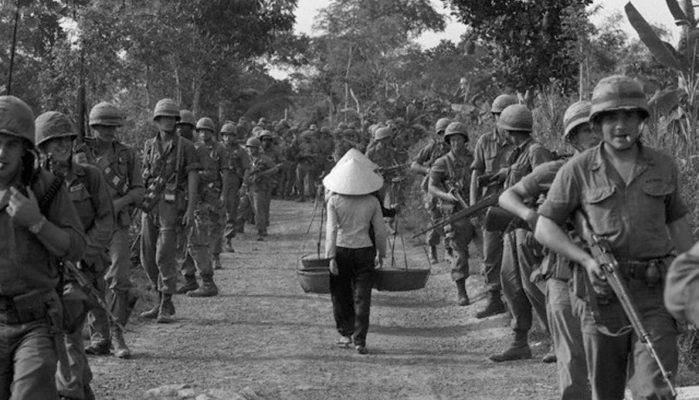
So follow me through the dates of this story and make up your own mind…
Until the arrival of missionaries in the 16th century, the language of the time was Chinese, spoken in ideograms, but with many specificities and variants.
It was a missionary, the French priest Alexandre de Rhodes (1591-1660), who introduced the Roman script by creating a phonetic transcription of this Vietnamese language: Quốc ngữ.
It wasn’t until the end of the 19th century that Quốc ngữ was adopted as the national written language.
The name Viêt Nam first appeared in the XIth century. It is composed of the word Viêt, which designates the people who lived in the north in the Red River region, and Nam, which designates the south.
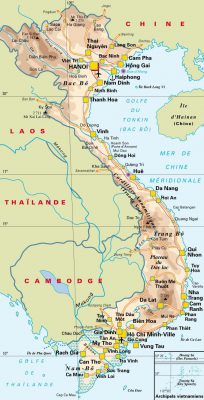 |
Vietnam covers 341,700 km2 (547.000 km2 in France) and has a population of 90 million (65 million in France).
Split in two by the 17th parallel, it is bordered by China to the north, Laos and Cambodia to the west and the South China Sea to the east and south. Its capital is Hanoi. Since 1975, it has been a “Socialist Republic” . Only the Vietnamese Communist Party is authorized, which controls all the country’s political institutions. The first person of state is the General Secretary of the Vietnamese Communist Party. Only after that comes the president and then the prime minister. The supreme State body is the Vietnamese National Assembly, which is renewed every five years. It is indirectly elected by all Vietnamese over the age of 18. Article 4 of the constitution states : The Communist Party of Vietnam, the vanguard detachment of the working class, the faithful representative of the interests of the working class, the working people and the entire nation, the follower of Marxism-Leninism and Ho Chi Minh Thought, is the leading force of state and society. |
1801: Unification of Vietnam by Emperor of Vietnam Gia Long.
After ten centuries of Chinese occupation and 8 centuries of struggle against northern aggressors to regain independence, the emperor Gia Long (1801-1820) reunited Vietnam within its present-day borders.
To protect himself from his long-standing enemy, China, he opened up to the West. Intelligent and pragmatic, Gia Long uses his good relations with France to help his country prosper and maintain its independence.
By contrast, his successors Minh Mang (1820-1840), Thieu Tri (1841-1847) and above all Tu Duc (1847-1883) rejected Western influence. They isolated the country, blocked trade and opposed French culture. Missionaries were persecuted.
French Indochina
We’re in the 19th century, in the midst of the Industrial Revolution and a booming European population (France, England, Italy, Germany, Russia…).
Vietnam’s desire for independence clashed with France’s need to find new economic markets and new areas to populate, and its desire to “civilize barbarian nations”..
This marked the beginning of a war of colonization of Vietnam by France.
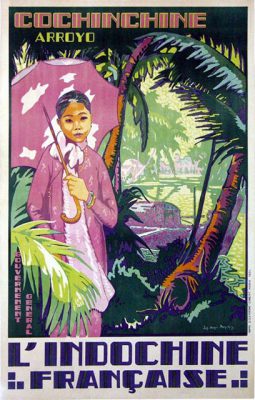 |
1862 : Cochinchina, the southern part of Vietnam, becomes a French colony with a completely French administration.
1874 : Annam, the central part of Vietnam, becomes a French protectorate with shared Franco-Vietnamese administration. 1883 : Tonkin, the northern part of Vietnam, becomes a French protectorate (mixed Franco-Vietnamese administration). France’s protectorate, recognized by China in 1885, then covered the whole of Vietnam under the name of French Indochina.
|
1887 et 1893 : Cambodia and Laos are attached to French Indochina (Cochinchine, Annam and Tonkin) to form the Indochinese Union under French colonial authority.
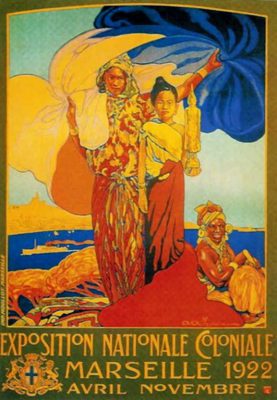 |
France struggles to control the immensity of its colonial empire :
Union Indochinoise, Algeria, Tunisia, Gambia, Gabon, Mali, Senegal, Djibouti, Comoros, Mayotte, Reunion, French Polynesia … It faced a series of nationalist uprisings which, in Vietnam, lasted from 1885 to 1896. Despite this, French colonial expansion continued until the first half of the 20th century.ème siècle : Morocco, Benin, Cameroon, Central African Republic, Chad, Republic of Congo, French Guinea, Ivory Coast, Mauritania, Niger, Togo, Madagascar, Lebanon, Syria … In addition to these colonies, there are territories in which France has numerous economic and political interests, but which it has been unable to incorporate into its colonial empire due to strong British opposition (Thailand, Egypt, India, Sudan, Ethiopia, Palestine, etc.). |
1930: With the help of Mao Tse-Tung and against the advice of France, Hô Chi Minh founds the Indochinese Communist Party. This was the first political step towards Vietnam’s independence in 1973.
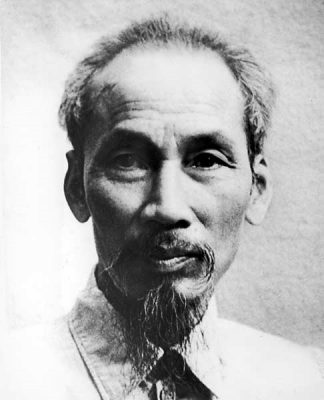 |
Hô Chi Minh “the one who enlightens”, real name Nguyen Sinh Cung was the son of a notable. Born in 1890, he left Vietnam at the age of 21 to study in London and Paris.
He travels in Europe, but also goes to New York, where he discovers segregation in Harlem. For a time, he even freelanced for the New York Times, writing opinion pieces on political life in Indochina. Worker in the United States, apprentice in England, photo retoucher in Paris, he was a founding member of the French Communist Party in 1920. Returning to Vietnam in 1941, he devoted his life to fighting for his country’s independence from the French and then the Americans, until his death in 1969. Little is known about this man who didn’t consider himself interesting enough to keep a diary or to relate his life to any biographer.. |
1932 : Rise of Bao Dai as Emperor of Vietnam, subject to France.
Born in Hué on October 22, 1913, Prince Nguyen Vinh Thuy was designated heir to his father, Emperor Khai Dinh, in 1926. He took the imperial name of Bao Dai (Guardian of Greatness).
In 1932,at the end of his studies in France, he was crowned 13themperor of the Nguyen dynasty in Hué.
1939 : Beginning of World War 2.
This total war was waged in Europe by Hitler’s Nazi Germany and Mussolini’s Fascist Italy.
In Asia, the war was waged by Hiro-Hito’s Empire of Japan.
1940 : Japanese troops invade French Indochina.
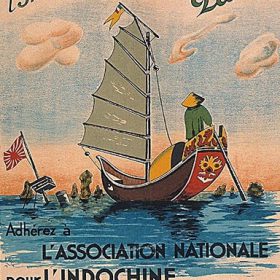
Subscription poster to finance France’s war against the Japanese Empire in Indochina. |
The fight against the Japanese invaders, Hitler’s allies, briefly brought Ho Chi Minh and the French closer together, as did the Americans, who joined forces. Alas, without success.
1941 : Hô Chi Minh returns to Vietnam to fight the Japanese occupation and founds the Vietnam Independence Front (Viêt minh). The Viêt Minh is a political grouping of Vietnamese nationalists of all persuasions, whose aim is the unity and independence of Vietnam. 1945 : In March, the Japanese put an end to French authority in Indochina. On March 11, 1945, under pressure from the Japanese who were occupying Vietnam, Emperor Bao-Dai denounced the protectorate treaties concluded with France. |
1945 : On May 8, the war ended in Europe with the unconditional surrender of the Third Reich.
But in Asia, Japan refused the unconditional surrender demanded by the Allies (Potsdam ultimatum), and continued to fight despite heavy losses.
1945 : At 8.15am on August 6, the Americans dropped a uranium-235 atomic bomb on Hiroshima to force Japan’s unconditional surrender. On August 9, it was Nagasaki’s turn.
| Hiroshima and Nagasaki. Can you think about it without crying ?
To this day, the United States, is the only country to have dropped atomic bombs on a civilian population. It’s easy to believe that the U.S. government under President Harry S. Truman and the Pentagon needed to demonstrate the bomb’s effectiveness in order to justify their enormous investment ? Can we imagine that the US Air Force was planning to drop a third bomb on Tokyo if the Japanese didn’t surrender their weapons quickly enough ? |
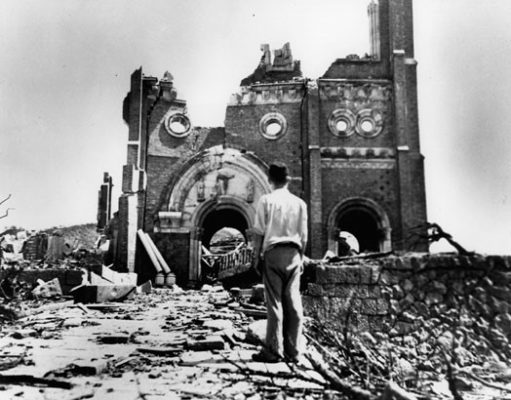
Urakami Cathedral (Nagasaki) in 1945. |
1945 : On September 2, Japan surrenders unconditionally. The Second World War finally comes to an end.
The Second World War was mankind’s greatest conflict: 61 nations, 100 million combatants, 62 million dead, the majority of whom were civilians.
The horrors and violence have surpassed the imaginable. The material damage is greater than the cumulative destruction of all the wars known up to that point. I think we’ve made progress since then.
The Indochina war (1945-1954) between the French and Hô Chi Minh’s nationalists.
1945 : On September 2, Hô Chi Minh unilaterally declares Vietnamese independence.
Hô Chi Minh, leader of the Viêt Minh party, tried to take advantage of the end of the war to gain independence for his country. But France wanted to maintain its position in the world in the face of its allies: the Americans, the British and the Russians. It cannot afford to lose Vietnam.
General de Gaulle, a man of war and freedom, has become a politician. He cannot recognize in Vietnam the thirst for freedom that led him to fight the Germans.
Hô Chi Minh aid “Nothing is more precious than independence and freedom”. General De Gaulle said nothing else on Radio-London a few years earlier.
Faced with this opposition from France, Hô Chi Minh communist asked for support from the United States, with whom he had fought against the Japanese. Unfortunately, the USA, in the midst of the Cold War against Stalin’s Soviet Union and Mao Tse-tung’s China, preferred to help France reconquer the whole of Vietnam and thus combat the Communist threat.
The French therefore drove out Hô Chi Minh and his supporters in the north of the country, and retained control of the south.
The Vietnamese people are pinning all their hopes for peace on this status quo, even though the country is split in two. For the first time, the 17th parallel separates the communist north from the capitalist south.
1946 : On November 23, the French bombed Haiphong and its port to dislodge the Viet Minh. Hô Chi Minh calls on the Vietnamese to fight against the occupier. The Indochina War begins.
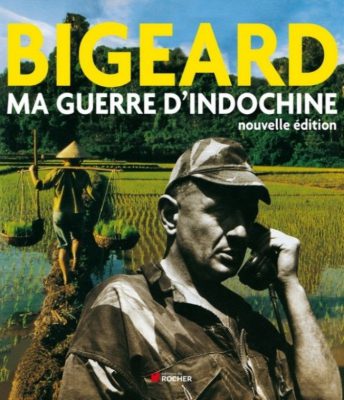 |
What can we say about a war ?
Its name ? This was to be known as the “Indochina War”. It will last eight years. Eight interminable years of suffering, violence and atrocities, with its good guys and bad guys, its heroes on both sides, whether generals or ordinary soldiers, peasants or young girls and even children. The French and Vietnam: a beautiful love story. But France, stubborn and clumsy, failed to accept the inevitability of Vietnam’s decolonization. Then, the communist nature of Viêt Minh would transform this conflict into a struggle of ideology and influence between the Eastern and Western Blocs. The Indochina war left 500,000 people dead or missing, including 50,000 French. |
1954 : On May 7, the French military defeat at Diên Biên Phû marked the end of the eight-year Indochina War.
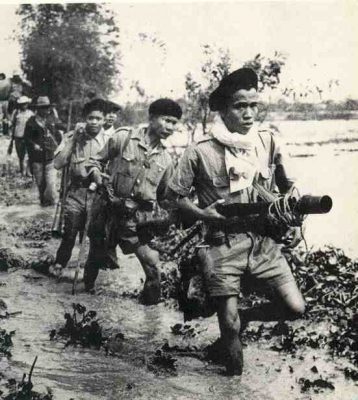 |
The military air-land operations base created in the Diên Biên Phu,basin, on the border with Laos, was intended to force the Viêt Minh to negotiate.
Aware of the strategic importance and stakes of this French position, General Giap decided to attack it. The two-month battle ended in defeat for the French forces and marked the end of the Indochina War. The French prisoners were treated abominably by the “Vietnamese communists” who wanted to re-educate the “French imperialists”: a 1200 km forced march through the jungle before being parked in camps where the mortality rate exceeded 60% under the supervision of political commissars who indoctrinated the survivors in Marxism. |
1954 : In spring, Emperor Bao Daï bowed to pressure from the United States and appointed Ngô Dinh Diem, leader of the anti-communist Vietnamese party, as head of government.
1954 : July 20, signing of the Geneva Accords establishing the “Democratic Republic of Vietnam” in the north, led by Hô Chi Minh, and the “Republic of Vietnam” in the south, supported by the Americans.
| In France, the war in Indochina, costly in terms of human lives and money, became very unpopular.
So, after its defeat at Diên Biên Phu on May 7, 1954, France, along with Great Britain, the USSR, China and the USA, signed the Geneva Accords, which imposed a ceasefire and froze the situation: the French in the south of Vietnam, governed by Emperor Bao Dai, and the Communists in the north, led by Hô Chi Minh‘s Viêt Minh. But beyond the status quo, the fundamental interest of these agreements was to impose free South and North Vietnamese elections in 1956. These were to lead to the reunification of the country. For France, the “end” of this war coincided with the start of the Algerian war, which also lasted eight years. |
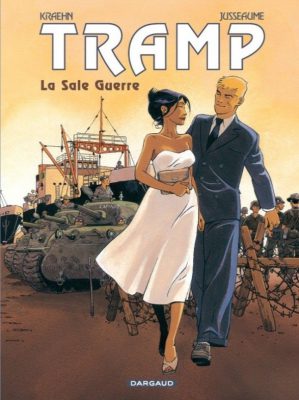 |
1955 : The elections, restricted to South Vietnam by the Americans, sound the death knell for the reunification of Vietnam.
En septembre 1955, Ngô Dinh Diêm, imposé chef du gouvernement par les Américains, organise un référendum qui abolit la monarchie. L’empereur Bao-Daï est déposé ; il s’exile en France où il résidera jusqu’à sa mort en 1997.
The way was clear for Ngô Dinh Diêm who, contrary to the Geneva Accords, organized elections only in South Vietnam. Having thus excluded Ho Chi Minh and his Communist Party from the ballot, Diem won the elections with 98.2% of the vote and declared South Vietnam a sovereign state.
The North Vietnamese then realized that the West, and in particular the Americans, had just confiscated the reunification and independence of their country by manipulating Ngô Dinh Diêm.
1956 : Last French troops leave South Vietnam.
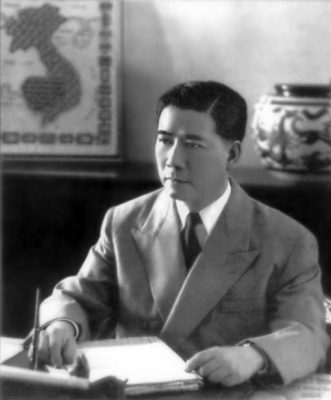 |
The departure of the French left the way clear for the Americans to wage their war against communism by steering the policies of Ngô Dinh Diêm.
He remained in office for 8 years until his assassination in 1963.. As soon as he was elected, he established a police state marked by violence and arbitrariness. He confiscated the 2 million hectares of land distributed to peasants by the Viêt Minh during the resistance against the French. It prohibits villages from electing their own representatives and imposes officials to police the village. He persecuted religious minorities (notably Buddhists, some of whom immolated themselves in public as a sign of resistance) and ethnic minorities in mountainous regions. He fanned the flames of hatred between the true “patriots of the South” and the former Viêt Minh who remained in the country after the departure of the French.
|
This regime of dictatorship and corruption quickly sparked revolt among the population. Numerous bloody coups d’état destabilized the power installed by the Americans.
The Vietnam War (1960-1973) between the Americans and Hô Chi Minh’s communists.
1960 : Creation of the National Front for the Liberation of South Vietnam (FNL).
Born on December 29, 1960, the Front National de Libération du Viêt Nam du Sud (National Front for the Liberation of South Vietnam) urges all Vietnamese to oppose the regime of Ngô Dinh Diêm and to achieve the independence and unity of Vietnam, under the banner of Hô Chi Minh‘s communist regime.
The FNL is commonly referred to in the West as Viêt Công.
This name was also used throughout the Vietnam War by the South Vietnamese and their American allies to designate their adversaries.
1960 : The Hô Chi Minh Trail.
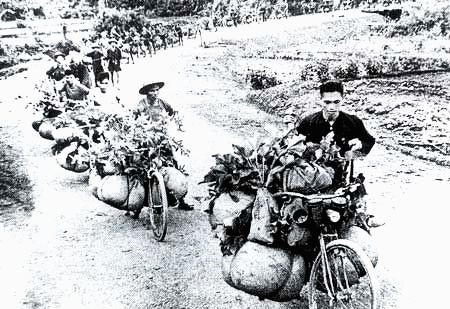
Somewhere on the Hô Chi Minh trail. |
From the early 1960s onwards, with the North Vietnamese infiltration of South Vietnam, it became clear that one of the key factors in the conflict would be the Hô Chi Minh trail.
The Hô Chi Minh trail is a multitude of tracks, roads and paths that are constantly shifted by American bombing raids.. From north to south, through jungles, rice paddies and mountains, sometimes passing through Laos or Cambodia, it’s a veritable blood network that continuously supplies the liberation forces with reinforcements, weapons and equipment. |
1961 : Beginning of the American spiral (subterranean warfare: propaganda, intimidation, espionage, sabotage, assassinations…) to counter Communist pressure from North Vietnam.
1963 : On November 2, Ngô Dinh Diêm was assassinated in Saigon by his own officers.
1963 : On November 22nd, the 35th President of the United States, John Fitzgerald Kennedy, was assassinated in Dallas (Texas) at the age of 46.
While Kennedy was still hesitant, his successor Lyndon B. Johnson, his successor, was convinced he could win the war against communism. He therefore increased the number of American “advisors” and troops on Vietnamese soil to over half a million.
1964 : On August 2 in the Gulf of Tonkin, naval incidents pitted the North Vietnamese against the Americans.
In early August 1964, North Vietnamese torpedo boats attacked two American destroyers and exchanged cannon fire.
Pentagon documents published in 2005 indicate that there was no North Vietnamese attack, but that American crews believed it in good faith. This “mistake” was used as a pretext for the United States’ general commitment to Vietnam.
1964 : August 4, US air strikes on North Vietnam in response to “aggression” in the Gulf of Tonkin.
1964 : On August 7, the U.S. Congress authorized President Lyndon B. Johnson to take all necessary measures in connection with the conflict in Southeast Asia.
These “necessary measures” were a total American commitment against the Vietnamese communists. This conflict, which was not a declared war with its rights and duties, was called the Vietnam War and lasted 9 years until 1973.
It was probably the support of Stalin’s USSR and Mao’s China for North Vietnam that prevented the United States from using its nuclear weapons.
1966 : “No Viet Cong ever called me a nigger” Cassius Clay
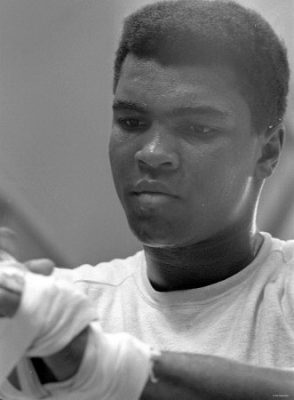 |
In 1964, a young 22-year-old black boxer made history by defeating the world heavyweight champion, Sonny Liston.
From then until 1981, Cassius Clay dominated the boxing scene, winning three world titles and 56 victories, 37 of them by knockout. A boxer of unrivalled talent and style, a provocateur and a conscientious objector, he used his fame to fight many battles of conscience, including the African-American cause. In 1966, he refused to take part in the Vietnam War, declaring “No Viêt Công has ever called me a nigger”. In 1975, Cassius Clay converted to Islam and took the name Mohamed Ali. Diagnosed with Parkinson’s disease in 1984, he remains a fighting legend both inside and outside the ring. He celebrated his 70th birthday in 2012. |
The Viêt Công, Haï, feared or admired, peasant or intellectual and warrior, the Viêt Công is a character who has entered the popular imagination of an entire generation.
Faced with American technological overpower, the Viêt Công blends into the population since it is its population,
it lurks in the forest because it is its forest,
it buries itself because it is its land,
it hides in rice paddies because it is water/span>
Faced with over-armed soldiers, the Viêt Công opposes his rusticity since he has nothing.
Faced with a stranger hunting him from everywhere, the Viêt Công is nowhere and everywhere, since he’s at home.
Americans and Vietnam: a brief history of hatred, contempt and mistakes.
| Unmindful of the consequences for the country and its people, the Americans used Vietnam to fight communism, an ideology they hated and which panicked them.
Failing to understand the personality and culture of the Vietnamese, they made mistake after mistake, even alienating their allies. To remove the peasants of the South from the influence of Viêt Công and to keep an eye on them, they moved and regrouped entire villages. These uprooted people, cut off from the lands of their ancestors, join the fight of the Communists in the North. They became their best allies in the South, protecting them, hiding them and helping them in a thousand ways. This is how many Frenchmen acted in the shadows to help the maquisards against the Nazis. |
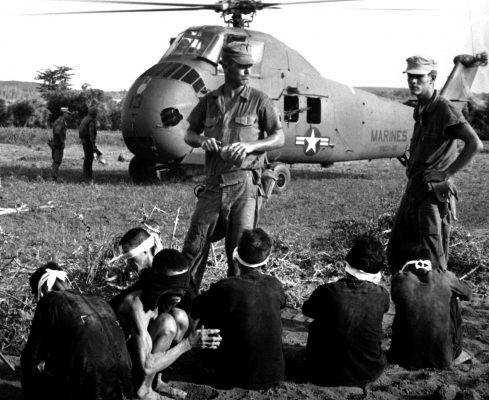 |
Officially, the Americans are fighting fraternally on the side of the South against the communist guerrillas of the North, but the reality is very different. The US military have no confidence in the natives, whom they underestimate. Despised by its allies, the South Vietnamese army doubts its reasons and choices, and loses all motivation in this fratricidal war.
1968 : The Têt offensive on January 31
| On January 31, 1968, it’s New Year’s Day in Vietnam, the Tet holiday. The Viêt Côngs (North Vietnamese Army and National Front for the Liberation of South Viêt Nam), under the command of Vô Nguyên Giap, launch a military attack against 105 cities in South Viêt Nam.
No city fell under the domination of the Northern forces, who lost 48,000 of their own, but the American military, who thought they were the masters of the South, lost their certainty. |
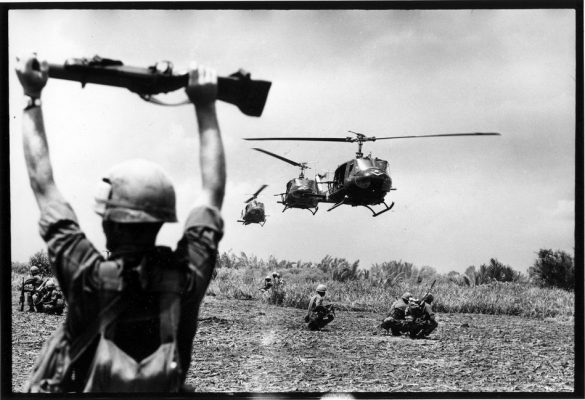 |
But above all, this desperate offensive shook American and world public opinion. For the first time in history, television is bringing a war into the home.
U.S. youth rebelled against the “dirty war”, which would be the first Americans to lose. President Johnson’s advisors were now opposed to the conflict.
1968 : U.S. Secretary of Defense Robert McNamara resigns in February 1968.
A brilliant officer, Robert Strange McNamara rose rapidly through the ranks of the US Army.
In 1945, during the war against Japan, he ingeniously initiated the dropping of incendiary bombs on the archipelago (100,000 dead in one night in Tokyo and 67 cities largely destroyed). For this “exceptional conduct during wartime”, he was awarded the Legion of Merit, left the army in 1946 with the rank of lieutenant-colonel, and began a new career with the Ford automaker, becoming its president at the age of 44 in 1960.
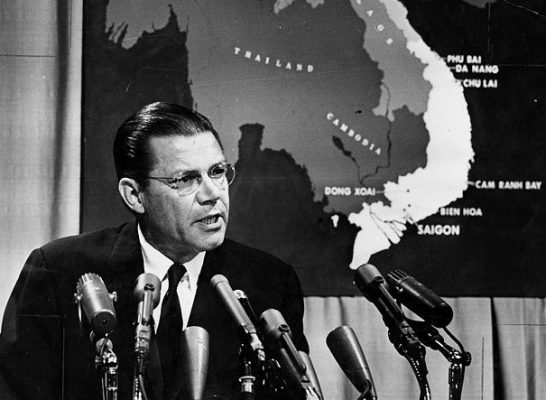
Secretary of Defense Robert S. McNamara at a Pentagon press conference in 1965. |
Called to the government by President John Fitzgerald Kennedy (1961-1963), he served as his Secretary of Defense and that of Lyndon Baines Johnson (1963-1968).
In this position, he added the Vietnam War to his list of honours, with its massive bombing of civilian populations and large-scale “napalming”. Under pressure from American public opinion against the Vietnam War, he resigned his post in 1965. |
No sooner had he left the government than McNamara was appointed President of the World Bank, which he headed until 1981.
His arrival marked a radical turning point for this institution, which abandoned its vocation of providing aid to developing countries in favor of a policy of dependence, in which debt became the main geopolitical weapon.
From 1968 to 1973, the World Bank granted more loans than since its creation in 1945.
Incentivizing the countries of the South to take on colossal debts with conditions obliging them to finance useless pharaonic works such as large ruinous dams in a damaged environment… All this without any mechanism to fight corruption and misappropriation of public funds.
His 20-year tenure at the head of the World Bank played a brilliant role in shaping today’s global economy. To fully understand this, it is essential to put ourselves in the shoes of the people who were confronted with his actions, to understand the extent of the devastation caused by a brilliant career based on the triptych “trade, war, debt”.
In 2009, Robert Mc Namara died of old age at home, aged 93, surrounded by the affection of his loved ones.
1968 : American bombing of North Vietnam halted.
Disavowed by the population and urged on by his advisors, US President Lyndon B. Johnson halted the bombing of North Vietnam in October 1968 and announced the start of peace negotiations. He did not dare to run for a second term.
1968 : Election of Richard Nixon in November.
Elected in November 1968, President Richard Nixon immediately withdrew 80,000 troops from Vietnam.
Under pressure from pacifist movements, the American government declared that it was now seeking peace and left the responsibility for the war to the South Vietnamese military.
1969 : September 3, Hô Chi Minh dies of a heart attack in Hanoi.
Neither the partial withdrawal of Nixon’s GI’s nor the death of North Vietnamese President Hô Chi Minh stopped the North Vietnamese Communists, who continued to demand the total withdrawal of the Americans as a precondition for a cease-fire.
North Vietnamese step up military action against South Vietnamese government forces in Cambodia and Laos.
1972 : Napalm bombing of the village of Trang Bang by the US Air Force.
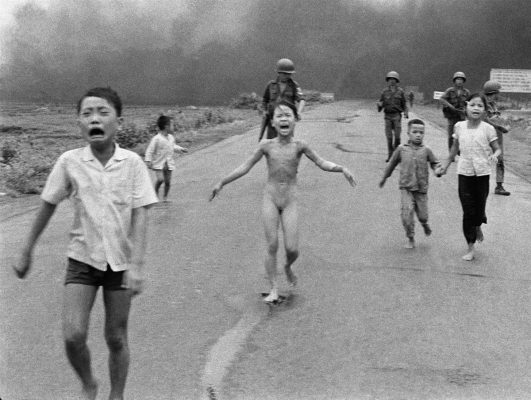 |
On June 8, 1972, a nine-year-old girl, Phan Thi Kim Phuc, was photographed..
She’s naked, full-frontal, screaming as she runs down a road, badly burned by napalm during the bombing of her village of Trang Bang. Her arms are outstretched, blinded by her pain, terrorized beyond belief. But the little girl’s arms met other arms and closed around the neck of Nick Ut Cong Huynh, the Vietnamese photographer. In the chaos and cries of horror, abandoning everything, he takes her to Saigon hospital. |
After 14 months of martyrdom, suffering and 17 operations, Kim Phuc is finally saved..
She gave Nick Ut the Pulitzer Prize for this photograph, and he gave her life. They will remain linked.
In 1997, she launched the Kim Phuc Foundation in Chicago to help victims of war.
A living symbol of the horrors of war but also of hope, Kim Phuc became a pacifist activist who was named a UNESCO “Goodwill Ambassador” in 1997.
1973 : On January 27, the signing of the Paris Peace Accords marks the withdrawal of American troops from Vietnam.
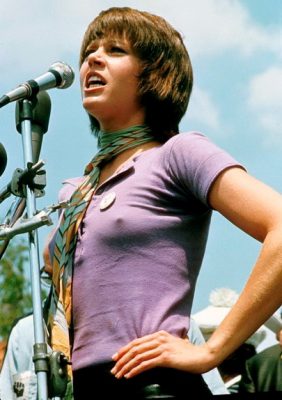
Jane Fonda at an anti-Vietnam War rally in the 70s. |
The 1973 Paris Peace Accords between the United States, the Democratic Republic of Vietnam (North), the Republic of Vietnam (South) and the National Front for the Liberation of South Vietnam (Viet Cong) put an end to 10 years of American war in Vietnam.
These agreements enabled the United States to withdraw “honorably” from the conflict under popular pressure while avoiding a formal defeat. But the Vietnamese civil war is not over yet. |
Taking stock of eight years of war in Vietnam.
| In Washington, a 150-meter-long wall of black Bangalore marble bears the names of 58,256 Americans killed or missing during the Vietnam War.
This memorial wall was created in 1982 by Chinese-American landscape architect Maya Lin. There is no wall to represent the 2 million dead Vietnamese, the 3 million wounded and the 12 million refugees. |
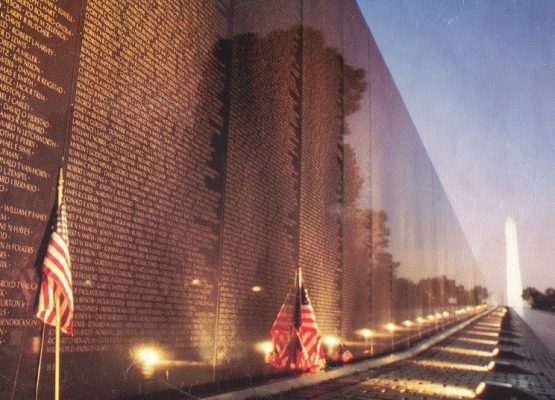 |
13 million tons of US bombs dropped on Vietnamese soil
77 million liters of toxic chemicals spilled over 1.7 million hectares.
Not to mention napalm, a viscous incendiary that sticks to objects and people. It wasn’t until 1980 that the United Nations banned its use against civilian populations.
The reunification of Vietnam
1975 : on April 30, General Giap’s northern troops enter Saigon victorious. This marked the defeat of the South and the end of the Vietnam War.
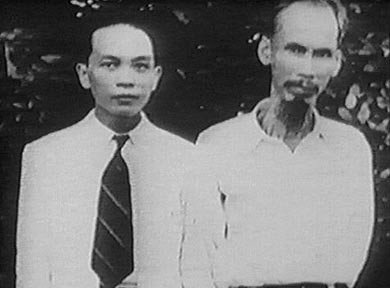
From right to left: Young Ho Chi Minh with future Marshal Giap. |
One day in 1925, moved by Ho Chi Minh‘s leaflets distributed under the cloak, a 14-year-old boy embraced the revolutionary cause and began campaigning against the French presence.
His name is Vô Nguyên Giap. A few years later, he gave up his career as a history teacher, and became the strategist behind the victory over the French at Diên Biên Phû in 1954 and the Têt offensive against the Americans in 1968. A self-taught soldier, admired and respected even by his enemies, General Giap did not attend any military academy. He is the only general to have defeated both the French and American armies in his lifetime. He still alive. |
1975 : A country reunited, but victors and vanquished separated.
| It was not the Vietnamese who cut their own country in two, creating from scratch mortal enemies of the same blood and culture, separated by the 17th parallel.
The culprits are the French, then the Americans, and finally those who let it happen. But it’s the Vietnamese who will pay the consequences. Indeed, once the “wall” of the 17th parallel has come down, there will still be winners in the north and losers in the south for generations to come. It’s only the surfaces that add up. For the men, it will take time, a lot, strength, a lot, and forgiveness, a lot, to rebuild a country with these two pieces. More than two million Vietnamese had this pessimistic but realistic vision of a fratricidal and ideological post-war period, and “chose” to flee their country to escape the unknown, reprisals, poverty and fear of the Communist dictatorship. It would be the apocalyptic exodus of the Vietnamese boat people. |
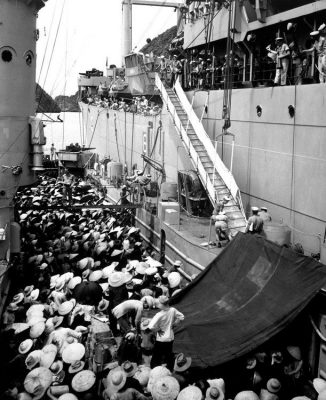 |
1976 : July 2, official reunification as the Socialist Republic of Vietnam, with Hanoi as its capital. Beginning of the American embargo that would strangle Vietnam for 20 years.
The two Vietnams reunite to form today’s Socialist Republic of Viet Nam, ruled by the Communist Party and whose capital is Hanoi, formerly the capital of North Viet Nam. Saigon becomes Ho Chi Minh City.
In reaction to the creation of this communist country, the Americans imposed an embargo..
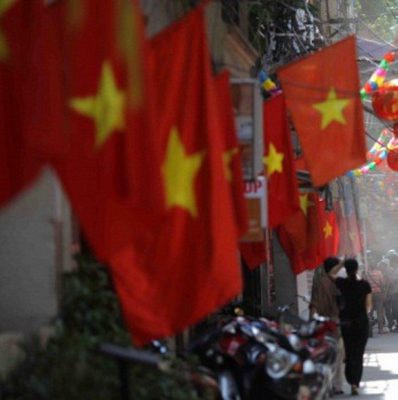 |
The gold star on the Vietnamese flag represents the unity of Vietnam.
The points of the star symbolize the union of workers, peasants, soldiers, intellectuals and youth working together to build socialism. The red background recalls the blood shed for independence. The old Vietnamese flags were also gold and red. Gold represented the skin color of the Vietnamese people. The various red motifs symbolized the three regions: Tonkin, Annam and Cochinchina. |
1979 : Vietnam War against China.
Following the massacre of Vietnamese peasants by the Chinese-backed Khmer Rouge, Vietnam, backed by the USSR, invaded Cambodia, putting an end to the Khmer Rouge regime and remaining there for eleven years.
1980 : Major General Pham Tuân is the first Vietnamese cosmonaut and the first non-Soviet Asian to go into space.
Departing from the Baikonur cosmodrome on July 23 1980 aboard the Soviet Soyuz 37 spacecraft for the Salyut 6 station, his stay in space lasted 7 days, 20 hours and 42 minutes.
1989 : Withdrawal of the last Vietnamese troops from Cambodia
1991 : Normalization of Vietnam’s relations with China.
1993 : French President François Mitterrand travels to Vietnam, actively campaigning for the lifting of the US embargo.
1994 : 20-year US embargo against Vietnam lifted.
Bill Clinton, the 42nd President of the United States, who never wore a uniform and therefore escaped conscription during the Vietnam conflict, decides to lift the trade embargo against Vietnam imposed by the United States twenty years earlier.
Although a majority of Americans were in favor, the lifting of the embargo aroused the anger of veterans’ associations, who saw it as the only way of forcing Hanoi to tell the truth about American soldiers who had been taken prisoner or gone missing during the fighting and whose fate had not been clarified.
In Vietnam, equally angry associations are fighting to obtain compensation from the industries that supplied the American army with chemicals, knowing full well that they were toxic to humans and with full knowledge of their use: to exterminate a people out of fear of an ideology.
In fact, in addition to conventional bombs, the Americans sprayed 77 million liters of defoliants, herbicides and weedkillers of all kinds, the most infamous of which is the dioxin-based Agent Orange.
Agent orange and white effective against beans, soybeans, frangipani, magnolia … Agent blue against cereals, bamboo, banana … Orange, white, blue, all highly effective against humans.
The impact on the environment was devastating, but even more so on human beings, whose effects persist today, three generations later: malformations, cancers, physical and mental illnesses, various genetic fragilities, etc.
Today we would speak of war crimes, crimes against humanity, etc..
The work of these associations is very difficult, as they cannot directly attack the American government. Indeed, one of the conditions for lifting the embargo that had been strangling Vietnam for 20 years was the renunciation of all compensation for war victims.
1995 : Vietnam joins the Association of Southeast Asian Nations (Asean). Resumption of diplomatic relations between the United States and Vietnam..
The Association of Southeast Asian Nations is a political, economic and cultural organization of ten countries. It was founded in 1967 by Indonesia, Malaysia, the Philippines, Singapore and Thailand, against the backdrop of the Cold War, to block the Communists, develop the region’s growth and ensure its stability.
The other five countries are Brunei (1984), Vietnam (1995), Laos (1997), Burma (1997) and Cambodia (1999).
1997 : In July, Bao Dai, the last emperor of Vietnam, dies in Paris.
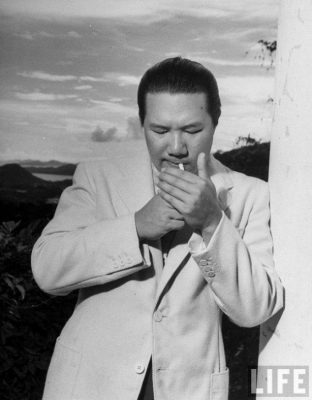
Emperor Bao Dai in Hong Kong in 1948 |
After 42 years of gilded exile, Bao Dai died on July 31, 1997 in Paris, leaving two sons and four daughters behind him, and having left to posterity a book dedicated to him entitled “Le Dragon d’Annam” (The Dragon of Annam), published in 1980 by Plon.
His determination to westernize Vietnam, his desire to spare the colonial power and, above all, his own interests, undermined the prestige of the monarchy of which he was the guardian, and undoubtedly encouraged the rise of the nationalist communists. Controversial political figure, plaything of the French and then the Americans, worldly aristocrat, his taste for luxury and pleasures too often caused him to fail in his duties except to benefit himself. Bao-Dai embodies the emperor whose lack of national consciousness largely facilitated the end of an aristocratic and traditional Vietnam. |
2000 : In July, a trade agreement is signed between the United States and Vietnam.
This agreement concerns the opening up of the Vietnamese economy and prepares Vietnam’s entry into the World Trade Organization.
2000 : President Bill Clinton travels to Hanoi in November.
First visit by an American president since the Vietnam War.
2003 : In February, textile trade agreement between the European Union and Vietnam.
2005: In June, Vietnamese Prime Minister Pham Van Khai visits the United States.
First trip by a Vietnamese leader since the Vietnam War.
2005 : In November, Vietnam’s National Assembly adopts the 1st anti-corruption law.
2006 : In November, Vietnam joins the World Trade Organization (WTO).
After 12 years of negotiations, the members of the World Trade Organization welcome Vietnam as the 152nd member, one of the last Communist countries on the planet.
2007 : 16 octobre, élection du Viêt Nam en tant que membre non permanent du Conseil de sécurité des Nations unies.
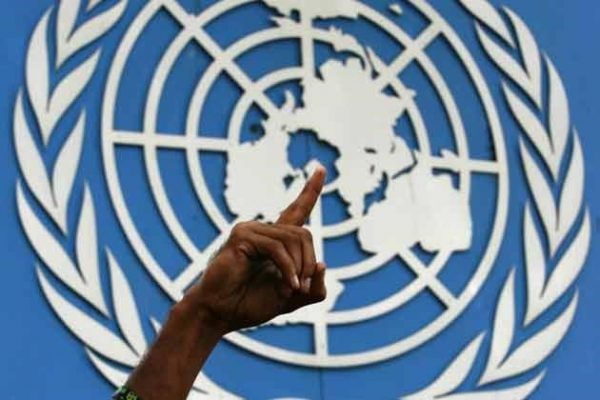 |
The United Nations Security Council is the executive body of the United Nations (UN).
Responsible for maintaining international peace and security, it has specific powers such as peacekeeping, international sanctions and military intervention (blue helmets). The Security Council has fifteen members: five permanent members with veto power (China, France, Russia, United Kingdom, United States) and ten elected for two-year terms. |
2012 : April 10, death of resistance fighter Raymond Aubrac at age 97.
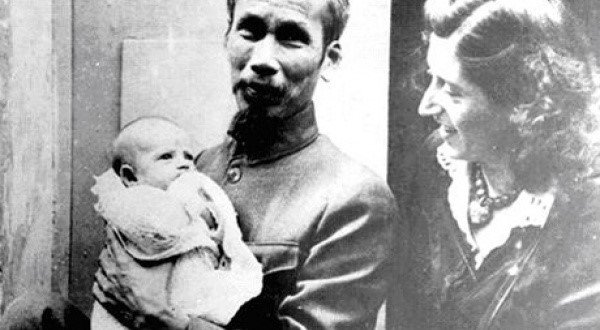
Hô Chi Minh, Lucie Aubrac and her daughter Elizabeth, in 1946. |
On the news of Raymond Aubrac’s death on April 10, 2012, Vietnamese President Truong Tân Sang sent the French Resistance fighter’s family a letter of condolence on behalf of the Vietnamese state and people.
Lucie and Raymond Aubrac, close friends of President Hô Chi Minh, worked tirelessly to bring the Vietnamese and French peoples closer together. |
Raymond and Lucie Aubrac are a key figure in the fight against Nazism, but as a couple, it was Lucie who caught the light. It was she who organized Raymond’s escapes when he was captured by the enemy. The first time, she was not yet called Aubrac.
Lucie Aubrac died in 2007. Her character was made into a film by Claude Berri in 1997, starring Carole Bouquet and Daniel Auteuil.
You might also like:





